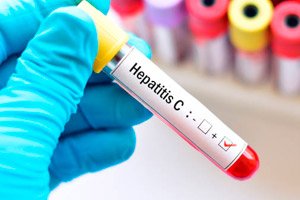
All iLive content is medically reviewed or fact checked to ensure as much factual accuracy as possible.
We have strict sourcing guidelines and only link to reputable media sites, academic research institutions and, whenever possible, medically peer reviewed studies. Note that the numbers in parentheses ([1], [2], etc.) are clickable links to these studies.
If you feel that any of our content is inaccurate, out-of-date, or otherwise questionable, please select it and press Ctrl + Enter.
For the first time, it has been calculated that about 74,000 children are born with the hepatitis C virus every year
Last reviewed: 03.08.2025
 ">
">A new study by researchers at the National Institute for Health Research and Prevention (NIHR HPRU EBS) at the University of Bristol has provided the first global estimate of the number of children born with the hepatitis C virus (HCV) each year. It is estimated that around 74,000 children are born with HCV worldwide each year, and around 23,000 of these are still infected by the age of five.
The largest number of such cases have been identified in Pakistan and Nigeria, followed by China, Russia and India. These countries account for about half of all cases of vertical transmission (from mother to child).
The study, published in The Lancet Gastroenterology and Hepatology, is the first in the world to provide estimates for each country, as opposed to previous data limited to Pakistan, Egypt and the US (and collected more than a decade ago).
“Our findings highlight the scale of the problem and the need for more testing. Without it, the virus, which in most cases can be treated, remains undetected in babies who are born with it,” said lead author Dr Adam Trickey, a senior research fellow at the University of Bristol’s School of Medicine.
The hepatitis C virus (HCV) is transmitted through blood. According to the WHO, about 50 million people worldwide are infected with it, and in 2022, 240,000 people died from complications caused by hepatitis C.
Since 2014, highly effective drugs against hepatitis C have been available in a number of countries, with a course of treatment taking approximately three months and resulting in a cure rate of more than 90% of cases.
The study also clarified the likelihood of HCV transmission from mother to child - about 7% per birth, as well as the proportion of children who clear the virus on their own by age five - about two-thirds.
At the same time, awareness of the infection remains low: according to WHO estimates, in 2022, only 36% of infected people knew their status. This is due to the fact that hepatitis C can be asymptomatic for many years, subsequently leading to severe complications, including cirrhosis and liver cancer.
American and European guidelines call for mandatory testing of pregnant women, but in most countries even then screening is rare.
“Even though there are effective drugs, most guidelines do not recommend treatment in pregnant women due to a lack of safety information,” Dr. Trickey added. “But there are clinical trials, and preliminary results show high efficacy and minimal side effects. It is important to expand testing so that as many people as possible have a chance of being cured.”
